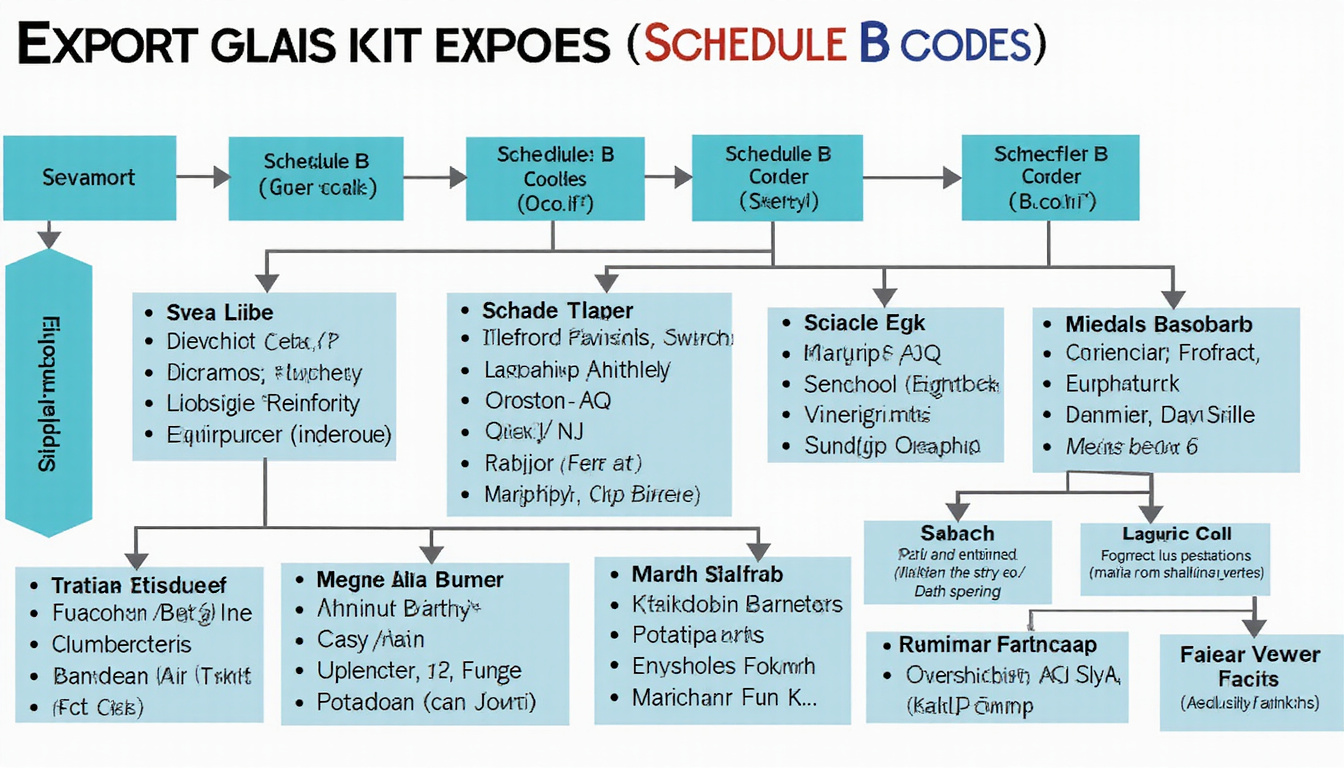Exporting goods can be a complex process, requiring precise documentation and adherence to international trade regulations. One essential element in this process is the Schedule B code, which plays a crucial role in correctly classifying and reporting exports from the United States. Understanding how to identify and use the correct Schedule B code ensures compliance with U.S. Customs and Border Protection (CBP) regulations and smooth customs clearance for your shipments.
In this article, we will explain what a Schedule B code is, why it matters for exporters, and how to classify your exports accurately. We’ll also introduce helpful resources like Classifast.com that streamline the classification process using international standards.
What Is a Schedule B Code?
A Schedule B code is a 10-digit code used by the United States Census Bureau to classify physical goods exported from the U.S. Each code corresponds to a specific product or category of merchandise. The Schedule B system is based on the Harmonized System (HS) maintained by the World Customs Organization (WCO), but it is tailored specifically for U.S. export statistics.
The Schedule B code serves multiple functions:
- It helps the U.S. government track and analyze the types and quantities of goods exported.
- It ensures export documents are complete and accurate.
- It aids U.S. Customs in assessing duties, if applicable.
- It allows exporters to comply with filing requirements such as the Electronic Export Information (EEI) system through the Automated Export System (AES).
Because of these functions, selecting the correct Schedule B code is essential to avoid shipment delays, fines, or penalties.
Why Is Correct Classification Important?
Misclassifying your exports can lead to several issues:
- Delays in Customs Clearance: Incorrect codes slow down inspections and approvals.
- Fines and Penalties: Regulatory bodies may impose fines on exporters for incorrect filings.
- Inaccurate Trade Data: This affects economic data and can skew market analysis.
- Export Control Violations: Some products require special licenses; misclassification might overlook this.
Accurate classification ensures your exports adhere to U.S. export regulations and international trade agreements, preventing costly operational interruptions.
How to Find the Right Schedule B Code for Your Export
Determining the appropriate Schedule B code involves understanding your product’s characteristics and description in detail. Here’s a step-by-step approach:
1. Know Your Product Inside Out
Thoroughly document the product’s material composition, use, and physical description. This detail is critical because the Schedule B system classifies goods by their nature and purpose.
2. Use Online Tools and Databases
The U.S. Census Bureau website offers a Search Schedule B tool. Additionally, resources like Classifast.com can instantly classify and suggest the correct Schedule B codes based on your product descriptions. Classifast supports multiple classification standards, including UNSPSC, NAICS, and ISIC, making it easier to coordinate your product data for international trade.

3. Consult the Schedule B Manual
The manual provides detailed guidance and product descriptions to assist exporters in code selection.
4. Reach Out to Experts or Customs Brokers
If in doubt, consult a licensed customs broker or trade advisor for help with complex products.
Understanding the Structure of a Schedule B Code
The 10-digit Schedule B code is structured as follows:
- The first 6 digits align with the international Harmonized System (HS) code.
- The last 4 digits provide further classification specific to U.S. export requirements.
For example, a Schedule B code starting with ‘1006’ relates to rice, while the subsequent digits define the rice variety or processing state.
Key Tips for Accurate Export Classification
- Avoid generic descriptions: Use specific product names.
- Include relevant details: Such as size, material, or intended use.
- Keep updated: Codes are reviewed and revised periodically; always use the latest edition.
- Check dual-use goods regulations: Some goods have export restrictions.
- Document your classification decision: For auditing and compliance purposes.
Using Classifast.com to Simplify Export Classification
Classifast.com provides a user-friendly instant classifier for various international classification systems, including Schedule B. How it helps exporters:
- Speed: Quickly generate accurate Schedule B codes from any product text.
- Accuracy: Minimizes human error in classification by relying on extensive databases.
- Cross-reference: Supports several classification schemes, facilitating multi-market trade.
- Accessibility: No complex software needed; accessible through a simple web interface.
By integrating Classifast into your export processes, you can ensure compliance and save valuable time.
Frequently Asked Questions About Schedule B Codes
Q1: What is the difference between a Schedule B code and an HS code?
A: The HS (Harmonized System) code is a 6-digit international classification, while the Schedule B code is a 10-digit U.S. export classification that incorporates the HS code plus additional U.S.-specific digits.
Q2: Where can I find the Schedule B code for my product?
A: You can use the U.S. Census Bureau’s online Schedule B search tool or online services like Classifast.com, which provide instant classification based on product descriptions.
Q3: Is the Schedule B code required for all exports?
A: Most commercial exports from the U.S. require a Schedule B code for Electronic Export Information (EEI) filings, especially those valued above $2,500 or requiring export licenses.
Additional Resources for Exporters
For more information on how to classify and export goods correctly, consult official government resources such as the U.S. Census Bureau’s Schedule B database. Additionally, authoritative bodies like the World Customs Organization provide detailed Harmonized System guidelines that complement Schedule B usage (source).
Conclusion: Classify Your Exports with Confidence
Properly classifying your exports using the correct Schedule B code is not just a regulatory requirement—it’s central to efficient, compliant international trade. With tools like Classifast.com at your disposal, you can quickly determine accurate codes for your products, reduce the risk of costly errors, and expedite customs processing.
Don’t let confusing classifications delay your global business ambitions. Start using reliable classification resources today, and ensure your exports sail through customs with ease!
Visit Classifast.com now to experience instant, accurate Schedule B classification and take the guesswork out of export documentation. Your global success depends on it!
